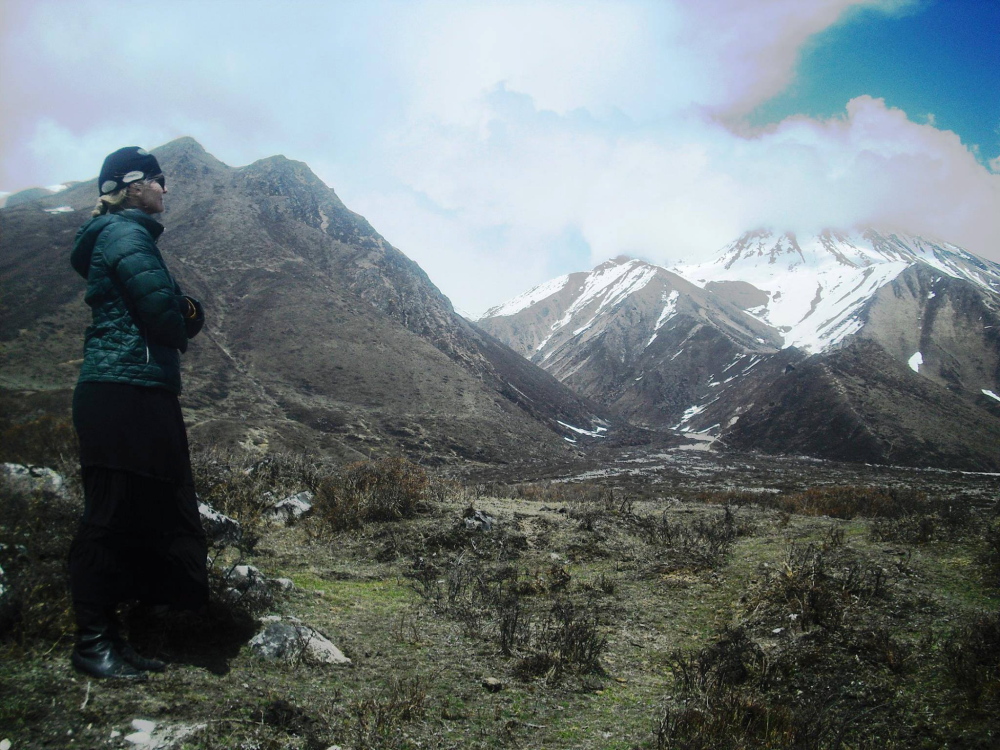The son of an Augusta woman missing in Nepal since the earthquake there April 25 said Wednesday there is no new information on the search for her following news that emergency workers had recovered the bodies of 60 people in the Langtang Valley.
The earthquake triggered a mudslide that buried a village in the valley, popular with tourists, where Dawn Habash, of Augusta, was last seen hiking.
The Associated Press reported that residents of the village, also called Langtang, said Tuesday that as many as 200 people could have been killed by tons of earth and mud unleashed in the devastating quake.
Habash, a 57-year-old yoga instructor from Augusta, was last seen on the day of the earthquake by a hiking companion in the area of Langtang. Habash was not among those found Tuesday.
The Augusta woman’s son, Khaled Habash, of Portland, said Wednesday he has had limited communication with his sister, Yasmine, who left for Nepal on Sunday with her boyfriend to search for their mother. He said she checks in twice a day via email with updates.
Khaled said he had no new information on the search, but he said he feels “stronger” after support from around the world.
He said Yasmine has been in the village of Kyanjin Gompa for 18 hours and plans to retrace her mother’s planned steps back to Langtang village.
The family has gained a lot of attention for their mother’s cause, with Yasmine appearing on CNN, which ran on Wednesday a story about Dawn. An online fundraising effort has gained nearly $24,000, which Yasmine has said will pay for searches and supplies.
The family has said they’re grateful for support from Maine and beyond via social media.
“The whole world will know once we find her,” Khaled Habash said.
Dawn Habash’s family has learned that before the quake, Dawn had planned to meet an Italian woman for tea in Langtang village, but it’s unclear where she ended up.
The Langtang Valley, about 35 miles north of Kathmandu, Nepal’s capital, is now about a two-day hike from the nearest town because the landslide has blocked nearby roads. While helicopters allow easy access, they remain in short supply because of aid missions across parts of Nepal, the Associated Press reported.
Authorities said that up to one-third of Kathmandu’s residents have left since the quake. In the first days, bus stations were jammed with people fearing aftershocks or trying to get home to relatives in devastated villages.
On Tuesday, there were still people waiting for buses to leave.
“I stayed back here to help out my neighbors and clean up the neighborhood,” Surya Singh, who was at a large bus station, told the Associated Press. But now he wants to see the damage in his home village, although with many roads still blocked by landslides, he was unsure whether he could travel all the way by bus.
“The entire village was wiped out by the mudslide. There were some 60 houses there, but they were all buried under rubble. It will be impossible to recover all the bodies,” said Gautam Rimal, the top government official in the Rasuwa district.
The April 25 earthquake killed more than 7,500 people and injured more than 14,000 as it flattened mountain villages and destroyed buildings and archaeological sites in Kathmandu.
Send questions/comments to the editors.



